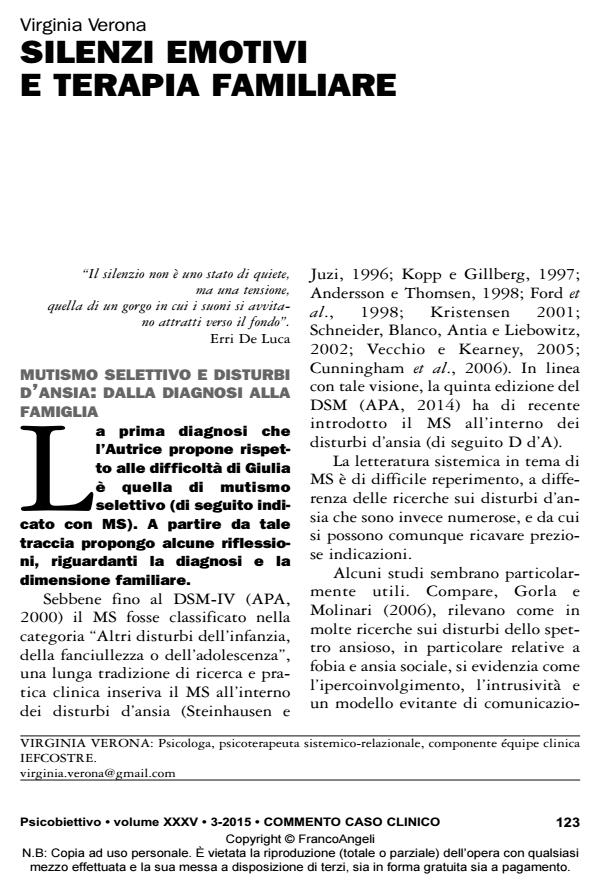Emotional silences and family therapy
Journal title PSICOBIETTIVO
Author/s Virginia Verona
Publishing Year 2016 Issue 2015/3
Language Italian Pages 7 P. 123-129 File size 91 KB
DOI 10.3280/PSOB2015-003009
DOI is like a bar code for intellectual property: to have more infomation
click here
Below, you can see the article first page
If you want to buy this article in PDF format, you can do it, following the instructions to buy download credits

FrancoAngeli is member of Publishers International Linking Association, Inc (PILA), a not-for-profit association which run the CrossRef service enabling links to and from online scholarly content.
From an examination of the literature that contextualises the symptoms of selective mutism and anxiety disorders with respect to family dynamics where they take form, one might suggest a possibility of systemic intervention in this particular clinical case. Considering the various bibliographic references, and the adoption of family resources as an aid to the difficulties of Giulia, the intervention should involve the participation of the whole family. The hypothesis could be to consider the symptoms of Giulia, of first silence, and afterwards tears, as highly significant, to be researched through a double path: on the one hand in the current family inter-relations and on the other, through examining the history that preceded and characterized Giulia’s family, eventually leading up to her current difficulties. The common thread of emotional dimension in the family dynamics, could well connect the two aspects of the therapeutic work, the structural one together with the narrative one.
Keywords: Selective Mutism; Anxiety Disorders; Family Therapy; Structural Intervention; Narrative Intervention; Emotional Dimension.
Virginia Verona, Silenzi emotivi e terapia familiare in "PSICOBIETTIVO" 3/2015, pp 123-129, DOI: 10.3280/PSOB2015-003009